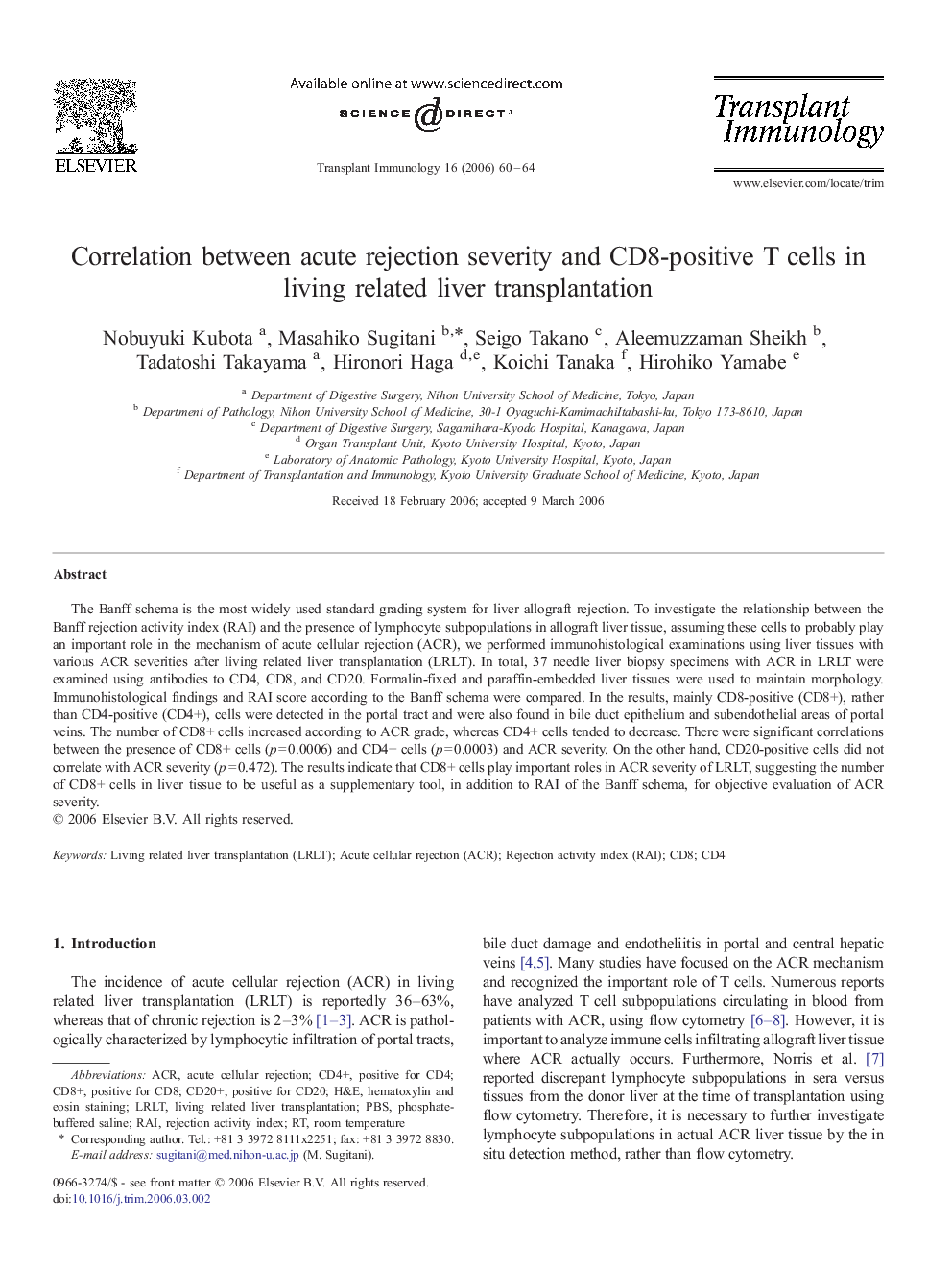| Article ID | Journal | Published Year | Pages | File Type |
|---|---|---|---|---|
| 3392678 | Transplant Immunology | 2006 | 5 Pages |
The Banff schema is the most widely used standard grading system for liver allograft rejection. To investigate the relationship between the Banff rejection activity index (RAI) and the presence of lymphocyte subpopulations in allograft liver tissue, assuming these cells to probably play an important role in the mechanism of acute cellular rejection (ACR), we performed immunohistological examinations using liver tissues with various ACR severities after living related liver transplantation (LRLT). In total, 37 needle liver biopsy specimens with ACR in LRLT were examined using antibodies to CD4, CD8, and CD20. Formalin-fixed and paraffin-embedded liver tissues were used to maintain morphology. Immunohistological findings and RAI score according to the Banff schema were compared. In the results, mainly CD8-positive (CD8+), rather than CD4-positive (CD4+), cells were detected in the portal tract and were also found in bile duct epithelium and subendothelial areas of portal veins. The number of CD8+ cells increased according to ACR grade, whereas CD4+ cells tended to decrease. There were significant correlations between the presence of CD8+ cells (p = 0.0006) and CD4+ cells (p = 0.0003) and ACR severity. On the other hand, CD20-positive cells did not correlate with ACR severity (p = 0.472). The results indicate that CD8+ cells play important roles in ACR severity of LRLT, suggesting the number of CD8+ cells in liver tissue to be useful as a supplementary tool, in addition to RAI of the Banff schema, for objective evaluation of ACR severity.
